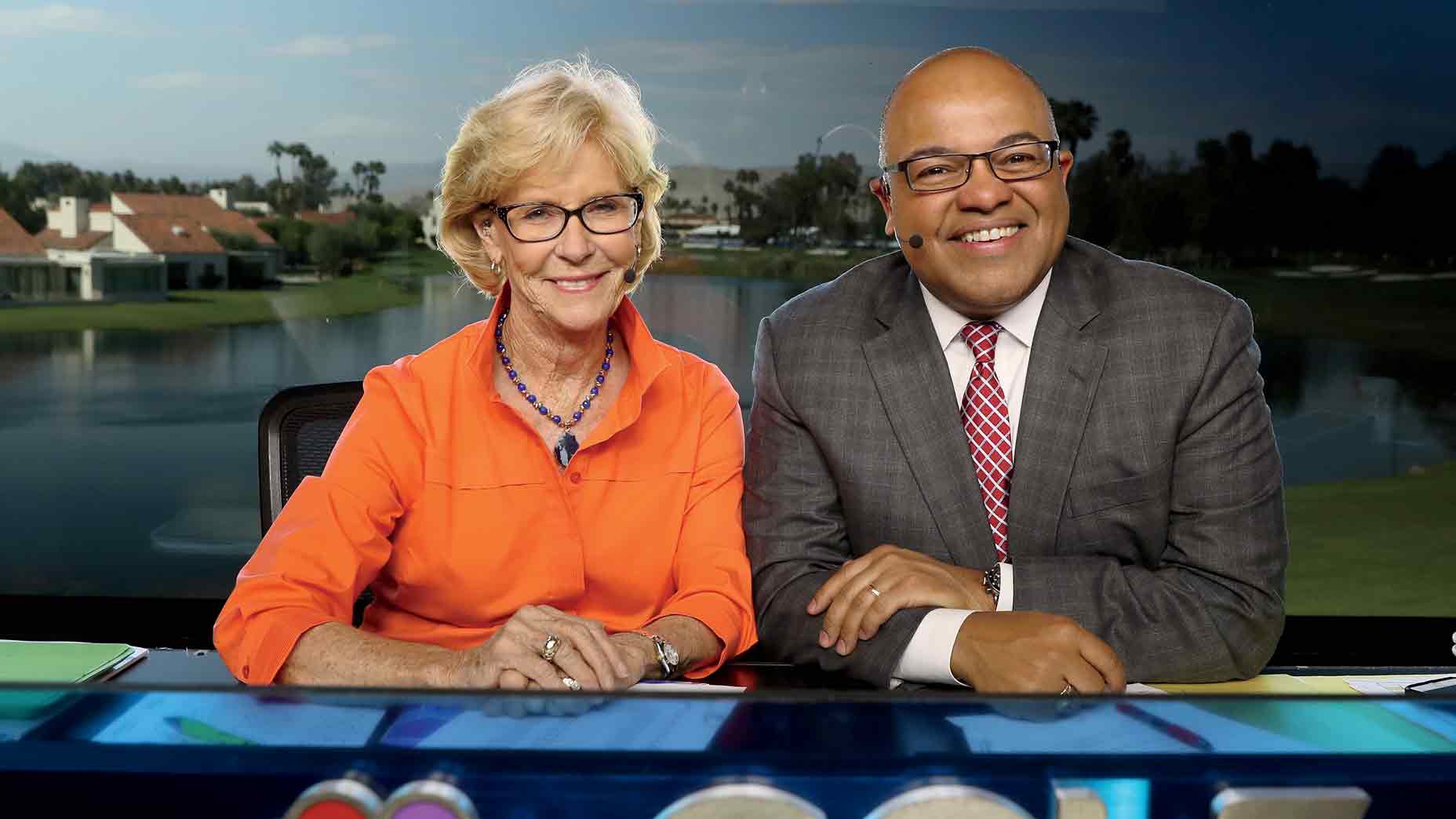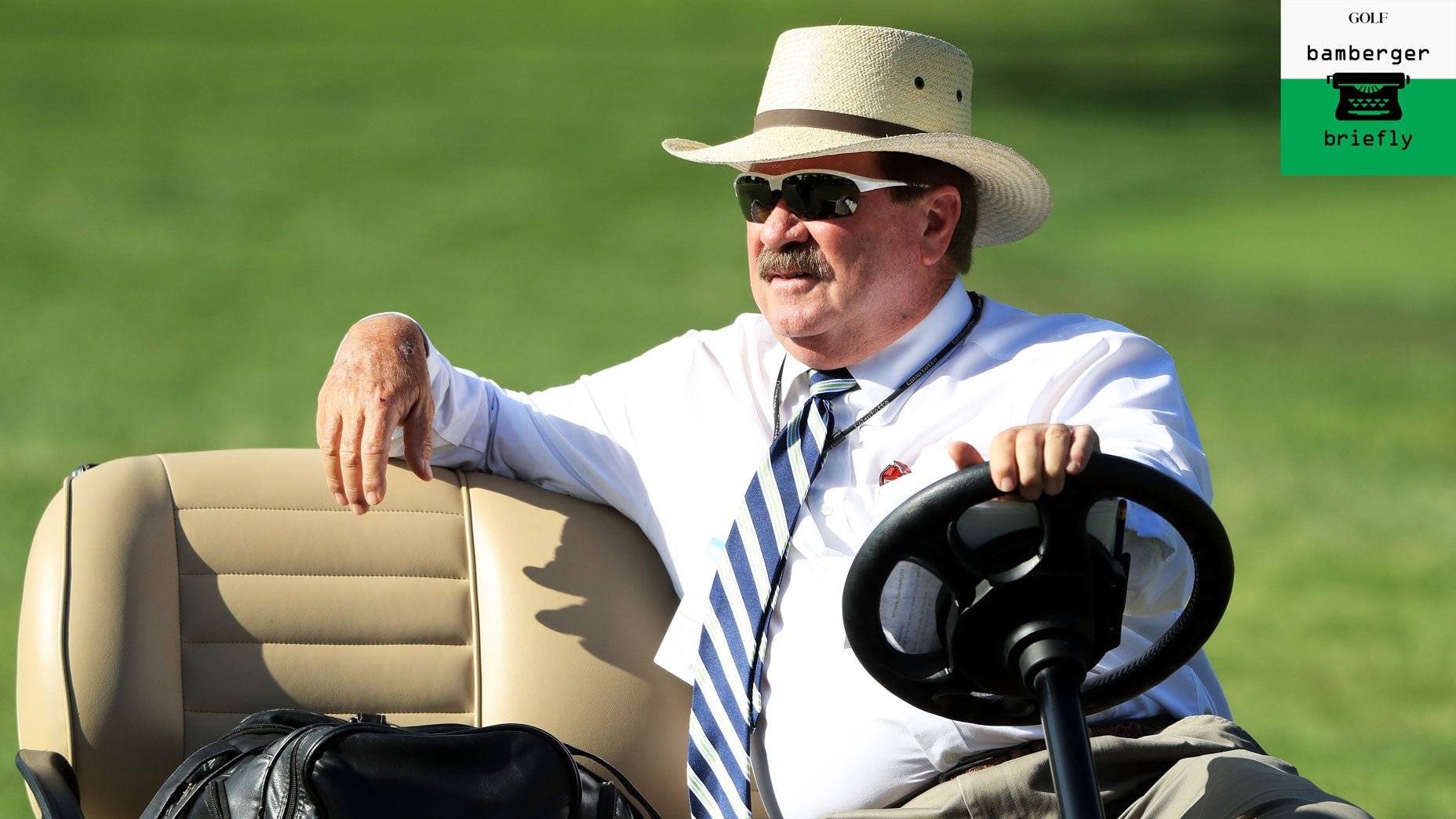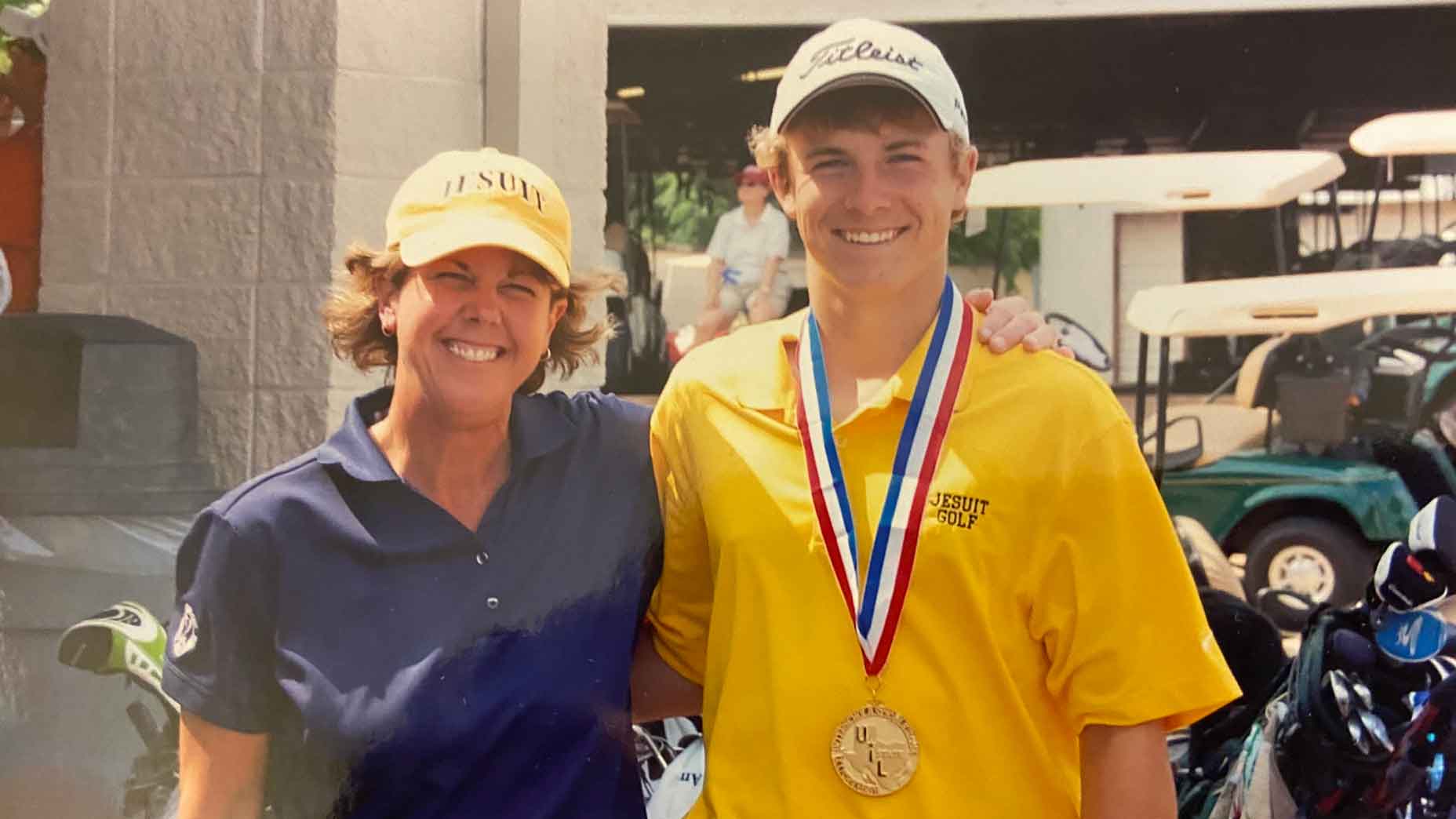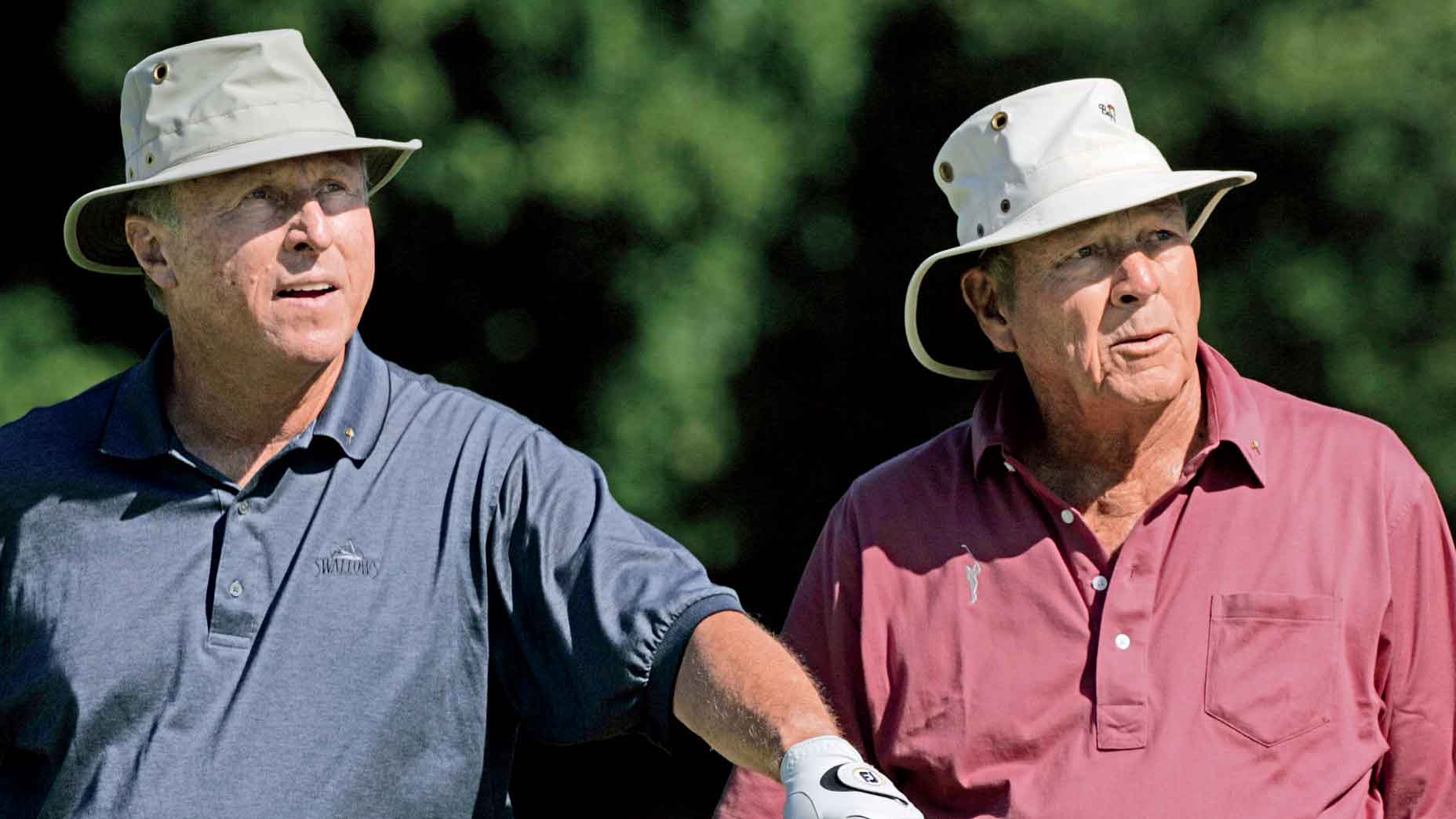My mother helped nurture my love of golf. Fortunately for me, she loved words, too
- Share on Facebook
- Share on Twitter
- Share by Email

On the left, mother and son, 1978, Patchogue, N.Y. (slacks courtesy of Mac Kavner’s Men’s Shop). Right photo: Dorothy Bamberger, here in 1981, loved boats, particularly the Queen Mary, which brought her to New York in 1938.
J.A. Bamberger
Sports Illustrated used to publish an insert called Golf Plus for home subscribers, as long as you were a known golfer. After getting it for years, my mother answered a series of questions on a renewal card with her customary honesty.
How many rounds of golf do you play annually?
Zero.
How much do you spend annually on golf equipment?
Nothing.
How often do you travel to golf resorts?
Never.
No more Golf Plus for you, lady!
Mom called the 800 number.
My son writes for your golf section — would that qualify me for it?
Once, while having an Arnold Palmer with Arnold Palmer, I said, “My mother was making these in the ’70s.” She mixed iced tea with pink lemonade. Orange juice, too.
“Really,” Arnold said. We talked about percentages. My mother knew what Arnold knew, that iced tea was the main ingredient. Her ice came out of rectangular trays with a metal handle to break the ice.
When I was writing my first book, at my parents’ house and on a typewriter, I returned one day from errands and my mother said, “A Ben Crenshaw returned your call.”
My mother left Hamburg, Germany, for New York as a young girl in 1938 with her family, amid the rise of Nazism. She was Gerda (her father’s name, scrambled) Frank at birth and Dorothy Bamberger after her wedding. She taught English in the same school system — Patchogue-Medford, on Long Island — that my brother and I attended. She knew how Davis Love’s mother, Penta, got her name, as the fifth girl in her family. From the Greek. See: pentagon, pentagram, pentathlon.
My mother did the New York Times crossword puzzle at breakfast, played Scrabble with my brother and me on rainy Sundays, could run certain categories on Jeopardy! Golf was not any part of her life until 1974. That’s when, as a young teenager, I got bit by the golf bug, courtesy of my eighth-grade gym teacher.
After that, every birthday card had a golf theme. My mother found secondhand clubs at a Salvation Army store. (Their steel shafts were painted to look like wood.) She bought a gently read hardcover copy of Power Golf, by Ben Hogan. She sewed little golfy emblems on my shirts, where you might expect to see the Munsingwear penguin or Arnold’s umbrella. She convinced my father that the junior membership at a nearby public course, one town over in Bellport, for $50 a year, was worthwhile. In the first year, as I recall, they paid half and I paid half.
A few years later, when my father came to Bellport to take photos of the caddie in the club championship, it was my mother who kept the peace. I said something like, “Get him the blank off this golf course now.” I’m certain it’s the only time I ever used a profane word in front of my mother.
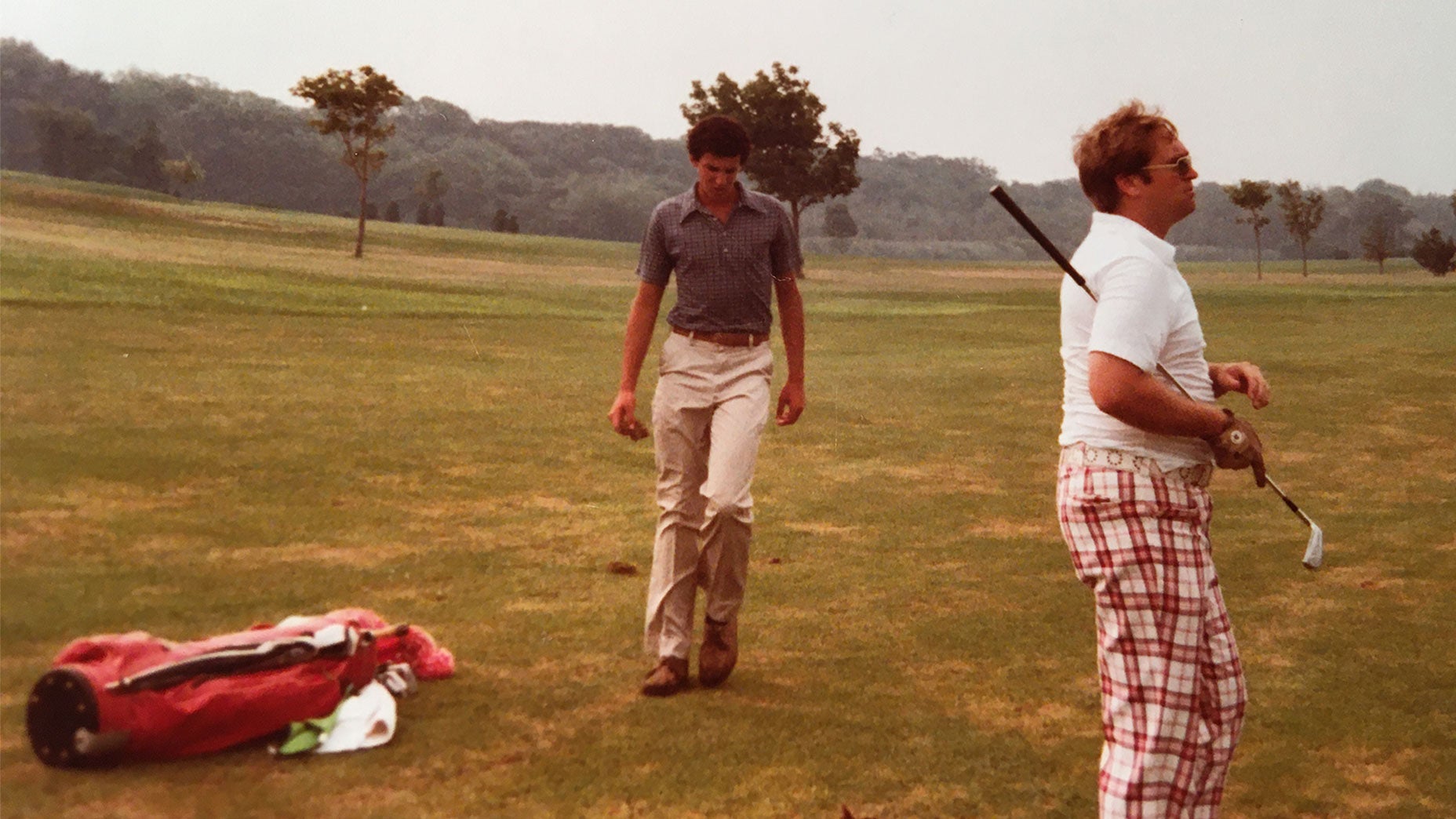
My mother learned to enjoy watching golf on TV, with one eye on the spectators. (She’d hear from her friends when a TV camera would catch me kneeling in the back of Tiger’s tee box.) She loved gardening, brisk walks, trees in every season; she understood my zest for the game on instinct alone. She learned the game in my little wake. When I was writing my first book, at my parents’ house and on a typewriter, I returned one day from errands and my mother said, “A Ben Crenshaw returned your call.” Lose the A, Mom.
The most powerful image for me from last year’s Masters was watching Tiger’s mother standing near the 18th green as her only child put the finishing touches on his fifth Masters win. She said nothing. Her face said everything. The pride.
Golf is stubbornly patriarchal. Old Tom Morris and Young Tom Morris, for starters. But the game’s millions of Pentas and Tidas — and may I say its Dorothys? — have always found inventive paths to public courses with junior programs, to driving ranges with nighttime hours, to yard sales with odd clubs laying out in the sun.
I owe my life to Edgar Frank’s decision to get his family on a boat, to the America that welcomed it, to my mother’s appreciation of language, to Mr. Greenlee’s eighth-grade gym class at South Ocean Avenue Middle School, next door to Patchogue’s American Legion hall. There were still World War I vets on its benches in my boyhood, surely more than one with an old-school single-word forearm tattoo: MOTHER. Mine, at 88, made her final liftoff in February, on Ash Wednesday, a little before 3 p.m., as schools all over were letting out. Knowing some golf, she liked to say, made the Times crossword far more manageable.
Michael Bamberger welcomes your comments at Michael_Bamberger@golf.com.

Latest In News

Michael Bamberger
Golf.com Contributor
Michael Bamberger writes for GOLF Magazine and GOLF.com. Before that, he spent nearly 23 years as senior writer for Sports Illustrated. After college, he worked as a newspaper reporter, first for the (Martha’s) Vineyard Gazette, later for The Philadelphia Inquirer. He has written a variety of books about golf and other subjects, the most recent of which is The Second Life of Tiger Woods. His magazine work has been featured in multiple editions of The Best American Sports Writing. He holds a U.S. patent on The E-Club, a utility golf club. In 2016, he was given the Donald Ross Award by the American Society of Golf Course Architects, the organization’s highest honor.

